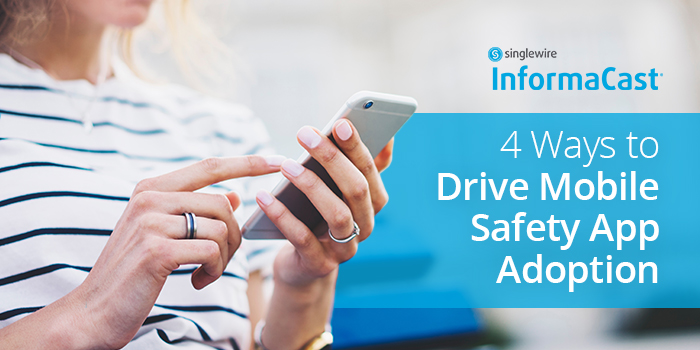Mobile Safety Application Adoption
More and more organizations are turning to mobile solutions when it comes to looking for easy ways to communicate with all their people. Whether it’s reaching remote workers, students on a college campus or people spread out within a large healthcare or manufacturing facility, being able to reach people directly on their cell phones means they receive information quickly and can begin taking necessary action. While mass SMS text messaging tools have been a quick fix in the past, new technological advancements are making a mobile safety application more valuable to end users. In addition to receiving push notifications, panic button capabilities make it easy to request help should they find themselves in a dangerous situation. Security teams can receive the person’s location and send help, while the person requesting help has the option to call and speak with someone directly from the app as they wait for help to arrive.
However, some organizations may find it challenging to achieve widespread app adoption. In this blog post, we’ll provide four suggestions to help drive mobile safety applications adoption in your organization.
Orientation
Whether it’s new employee onboarding or incoming student orientation, this is an opportune time to have people download a mobile safety application on their phones. Whoever is leading the session can provide a detailed walk-through of the steps they need to take to get the app up and running and begin receiving alerts. Attendees can also have questions answered immediately by an expert to remove adoption barriers further.

Handout
If in-person interaction is not an option, having handouts available with instructions can be a quick and efficient way to provide people with the information they need to download the app. Handouts can include a graphic of the app so people know they are downloading the correct one, as well as bullet points regarding how people can expect to use the app.
Sending an email with instructions and links to download can also reduce the lift for end users to adopt the app. Since many people can access email on their phones, it is easy to move from the links in an email to an app store to add it to their device. The simpler your organization can make the download process, the more likely it is people will adopt the app.
Posters and Digital Signage

Placing posters around buildings or using digital signage to display download information is another simple way to encourage adoption. These can include similar information to a handout as well as a QR code to quickly connect them to an app store to download the app immediately. Posted instructions also help reinforce the idea that your organization is keeping safety top of mind.
Mistakes to Avoid
If your organization is successful in achieving high adoption, remember not to abuse the privilege of being able to connect directly with your people. Send too many notifications, or notifications that are irrelevant can result in alert fatigue, leading to your recipients ignoring vital messages. Create a strategy for when notifications will be sent and make certain that the information included is relevant and useful.
It’s also important to remember that a mobile app should only be one component of your organization’s emergency communication plan. Leveraging on-site devices like desk phones, IP speakers, digital signage, and desktop computers to deliver text and audio messages can extend the reach of your notifications, making it much more likely that everyone receives information quickly.
Read more about what to look for in our free Mass Notification Buyer’s Guide.
